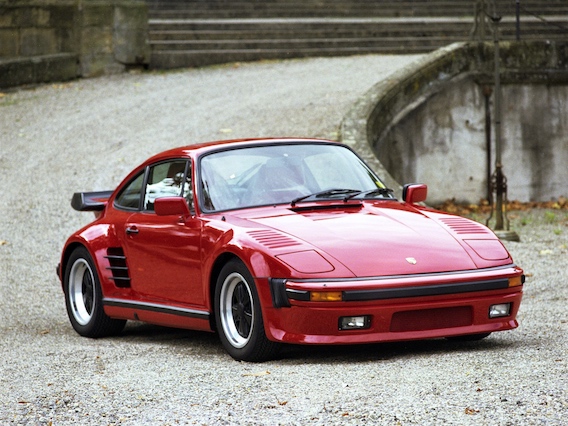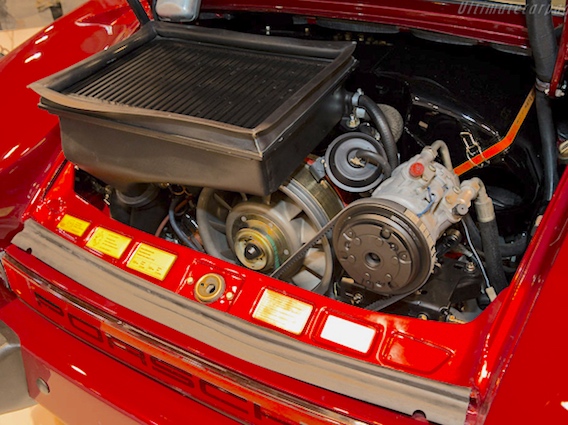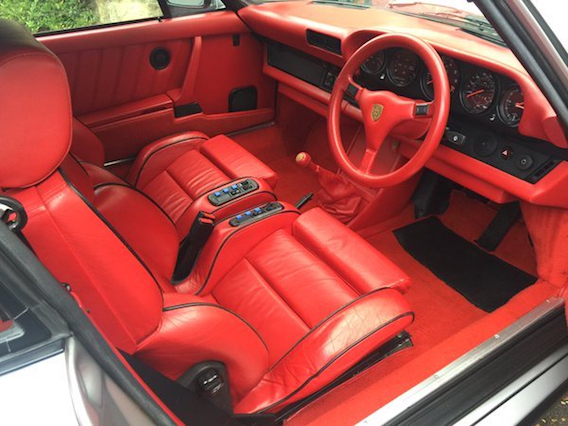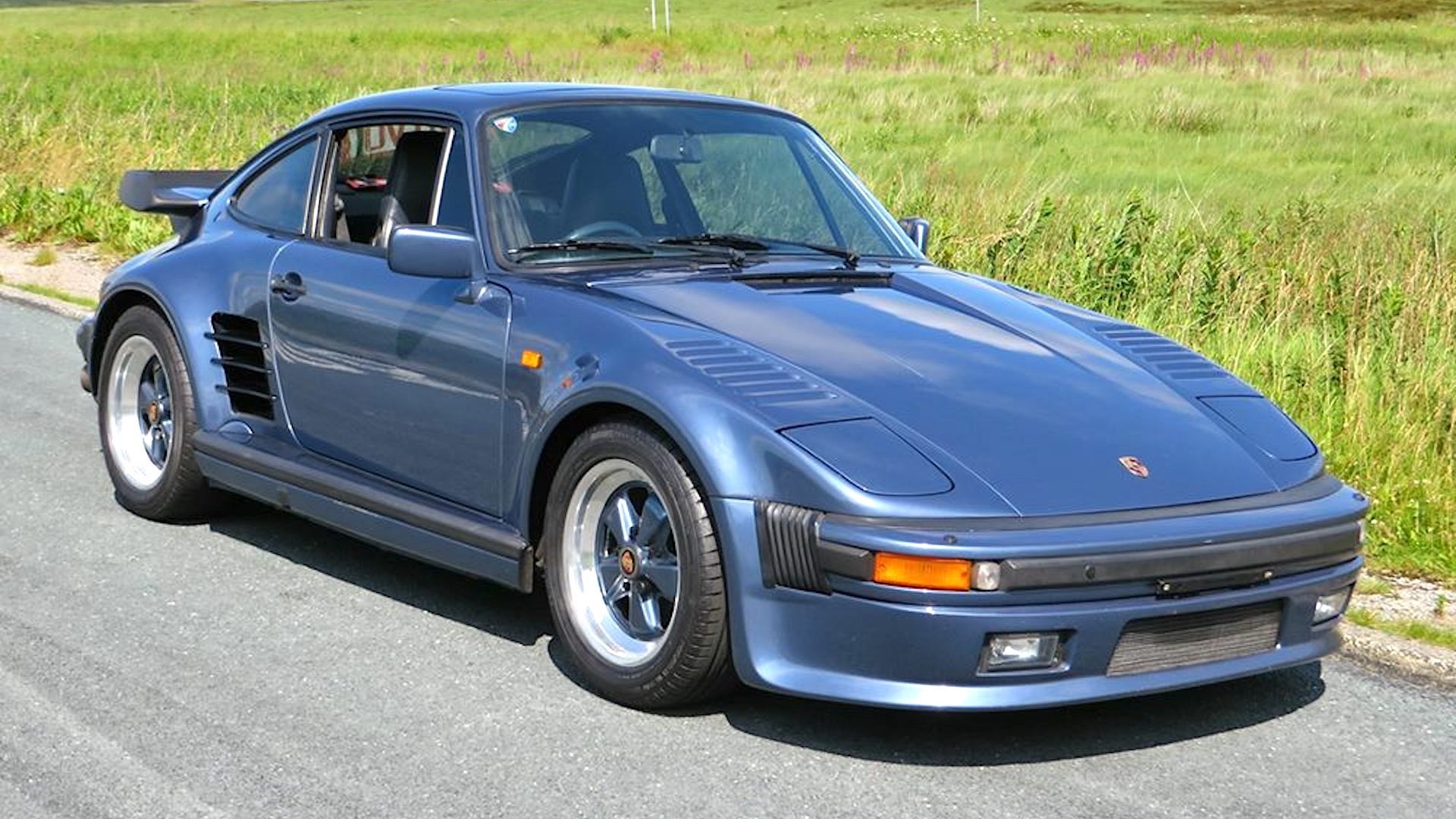Fake or Fortune
When considering the purchase of a 911 Turbo S or 911 Turbo SE (slantnose), the old adage 'buyer beware' is unfortunately very true. The factory produced a number of variants of the 911 slantnose over time, some cars leaving the factory as a slantnose, others being converted using factory parts retrospectively. In addition, there are a multitude of after-market firms that produced replica parts that makes it even more difficult to sort out flachbau facts from fiction. The disparity in values between genuine cars and 'converted' cars is significant, so it makes sense to take all reasonable steps to validate a car's provenance.
In the past, it has been possible to have your Porsche importer arrange for a Certificate of Authenticity (now Certificate of Production). Porsche did keep record of those cars manufactured in Stuttgart as a Flachbau or Slantnose from factory, and whilst the Porsche Archive is a good resource, cars converted as 'used' vehicles by the factory or from new by accredited US dealers (M505) are less well documented. In such cases information requests will most likely be returned as 'manufactured as a standard 930'. Furthermore, the slantnose was not officially available in the US until the launch of the M505 option in 1987.
Factory cars made from the 1987 model year (M505 / M506) will have the 505/506 option code displayed on the factory sticker on the reverse of the bonnet/hood and in the log book when the car was supplied. Earlier 'Special Wishes' cars did not have any such option codes displayed.
However, there are a number of key areas in the links below that can be used to help verify the authenticity of factory slantnose models:
If you have found what seems to be a genuine car, next you also need to consider a buyer's checklist, find out more
Bodywork Checks
Fitment of steel front wings/fenders (not fibreglass). First generation cars had no pop-up lamps. Second generation pre-M505/M506 cars could be specified with or without the front or rear wing vents, with or without sill covers, and third generation (M505/M506) cars had the front and rear wing vents and sill covers. Note that the lamp pod covers themselves have a tapered profile. Some aftermarket conversions are more rectangular e.g. Gemballa.

A number of factory modifications were made comprising:
The front left wheel house wall is modified to permit the submergence of the concealed lamp pods. The bumper impact absorber/pipe holder is now welded onto the wheel house wall.
The headlamp operating shaft has consoles or metal retaining mounts welded on the left and right sides of the lock cross panel to take the lamp bar, with M8 securing nuts that mount the bar welded to the bonnet lock console in the middle. This shaft is powered by a single central drive motor in front of the lock console (twin motors are a sure sign of aftermarket conversion).
There should be a 7mm gap between the wings and the front and sides of each lamp pod cover and a 9 mm gap to the top. Cars with pop-up lamps should have Porsche 944 circular style sealed units and not square or rectangular lamp units (typically fitted by aftermarket tuners).
Inside the front luggage compartment/trunk area there should be three fibreglass covers. One around the lamp motor to the front cross panel, another covering the left lamp linkage, and a third covering the right lamp linkage and oil cooler pipes (non M505 cars). In additon, there are two brackets welded to the luggage compartment floor plate to the right rear side to mount the re-sited car jack via securing straps.
Boxed sill covers / rocker panel covers and lamp pod covers should be stamped with unique factory part numbers (later M505/M506 models). Jacking tube extensions are welded on to existing jacking tubes to compensate for boxed sill covers / rocker panel covers. The rubber plugs on cars with sill covers / rocker panel covers are different from standard 911 to account for the change in inclination of the jacking tube (due to boxed sill covers).
Cars fitted with rear air inlet ducts (some first generation models, most (but not all) second generation models and all third generation models), should have a 10mm collar around the edges of the air duct on the rear wings/fenders. The inner duct area on pre-M505/M506 cars (Special Wishes) is made from fibreglass bonded to the wings without a noticeable join. Late Special Wishes cars and all M505/M506 cars used hot-galvanised sheet metal secured to a bracket welded to the wheel house wall, and mounted with self-tapping screws to the wing (with a noticeable join/shut line). M505 cars had ducts that allowed for the oil cooler on the right side.
The vent slats on the rear wings (spacing connectors) are each of different size to fit the profile of the duct. Earlier cars had slats made from wood with later models having ones made from a fibreglass core. The connectors should have been mounted with 58 mm of spacing between each one.
US cars pre-dating the M505 models should be Euro imports due to the car not being type approved prior to 1987. If it is a genuine Euro import, it will most likely have the turn signal repeaters behind the front arches on the wings. Those not featuring these additional lamps are most likely to be after market conversions.
Given the values of these cars, there are also a handful in circulation that have been converted from LHD to RHD, and therefore not as manufactured at the factory. Obvious tell-tale signs include the direction of the wipers, the position of the door mirrors and the presence or absence of market-specific lamps and side lamps. Due to type approval laws, it would have been unlikely that such vehicles would have been delivered new in this form.
More details can be found on:
If you have found what seems to be a genuine car, next you also need to consider a buyer's checklist, find out more
Mechanical Checks
Most of the obvious signs of authenticity are not mechanical. Nevertheless, it is worth checking the options code on the bonnet sticker, and in the car's log book for evidence of factory modifications. Given the age of the cars, many have been modified by aftermarket specialists.

Common mechanical features include:
A Limited Slip Differential (LSD) remained an option on the earlier cars, though most left the factory specified with one. The option code will be in the owners log book.
Porsche offered engine upgrades from first generation slantnose models through to last of the line cars. Most common was a Turbo S kit that increased power to 330BHP and comprised fitment of SC cams, a K27 turbo, a 1.0 bar boost spring and a 4 outlet free-flow exhaust system. The original ignition timing sticker on the fan shroud is a good indicator of factory provenance. If it is specified as 29 degrees BTDC, it is likely to be standard 930, if 25 BTDC it is likely to have an upgrade kit. Cars fitted with the 330bhp kit usually have a larger intercooler and the engine will have a '930/66 S' stamp on the block to confirm that it is specified with this kit. Some cars have modifications that take power to 385 BHP and 400 BHP. However, most with outputs higher than 330 BHP have benefited from aftermarket modifications.
The Euro / RoW slantnose models had a front-mounted oil cooler, with pipes that run through the luggage compartment under the fibreglass covers. The M505 (US spec) cars had an oil cooler fitted behind the rear right air duct due to restrictions in some US states where safety of the front cooler setup was questioned. As a consequence, the M505 models left the factory with the standard 930 front valance and fog/driving lamps, compared to the Euro models that had the deeper front air dam.
More details can be found on:
If you have found what seems to be a genuine car, next you also need to consider a buyer's checklist, find out more
Interior Checks
These cars were optioned up as 'special request' purchases. Early cars often had bespoke interiors though even the later M505/M506 models regularly had extras fitted from the Special Wishes catalog.

Common interior features include:
One of three main custom centre console designs containing additional dials and/or stereo equipment. Most pre-M505 / M506 cars left the factory with one of these featured. Later M505 cars more often than not only had the standard 930 floor console. From what I can tell, all M506 cars were optioned with a custom centre console.
There were generally three types of 'Special Wishes' steering wheel fitted to slantnose models. The first comprising the standard 930 wheel with horizontal horn push design that displays a coloured Porsche crest on the top right of the horn push (M505), the second based on the standard 3-spoke Porsche wheel but with custom brass Porsche badge in the centre of the horn push, and the third being the Italvanti Type F / Ati 3-spoke wheel with horn buttons on each spoke and a heavily padded, double stitched horn push with coloured Porsche crest (M506). Not all cars had special steering wheels, though those that did not are rare.
Many of the Special Wishes pre-M505 M506 cars also had custom drop down cassette trays below the dashboard, with brass Porsche crested buttons as finishers. Cars with this option from factory will also have additional illumination for those trays when the car lights are on.
A handful of cars were also specified with optional Recaro leather seats to the front.
Other options extended to custom walnut dashboards, additional boost gauges and dials, and leather headliners.
Cars with special order interior colours would also have been through the Porsche Special Wishes Department. The colour will be indicated on the log book as '99' or interior colour to sample'.
More details can be found on:
If you have found what seems to be a genuine car, next you also need to consider a buyer's checklist, find out more
